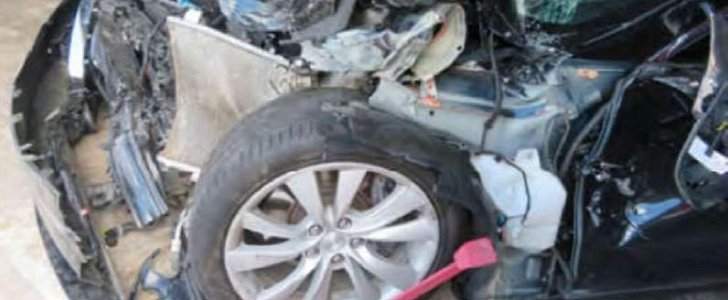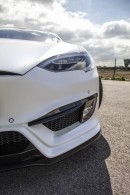Another driver is taking Tesla to court over its Autopilot mode and what the company says – or doesn’t say – about what it can do. Shawn Hudson crashed his 2017 Tesla Model S into a parked car earlier this month, with Autopilot on.
This isn’t the first lawsuit of the kind and it will probably not be the last. While Tesla is adamant that the owner’s manual of all Tesla cars and all related literature clearly state that vehicles don’t drive themselves even with Autopilot on, drivers are still being “duped” by marketing into believing the contrary.
That’s what Hudson’s attorney is claiming in the lawsuit filed against the carmaker, as per the documents obtained by Ars Technica. All materials on the Tesla website and the personnel at their dealerships oversell the Autopilot mode, so Hudson was led to believe that his Model S could run on its own, with minimal intervention on his part, if at all.
In fact, that’s precisely why he bought the car, he says. He has a 2-hour daily commute to work on the Florida highway, and he claims to have received assurances from Tesla that the car would practically be driving itself all the way there.
Earlier this month, it smashed into a stationary Ford Fiesta at 80mph. The Autopilot was on and Hudson didn’t have his hands on the wheel, because that was the message he had gotten from Tesla.
“Through a pervasive national marketing campaign and a purposefully manipulative sales pitch, Tesla has duped consumers [into believing that Autpilot can] transport passengers at highway speeds with minimal input and oversight,” the lawsuit states.
Moreover, “Tesla's sales representative reassured Hudson that all he needed to do as the driver of the vehicle is to occasionally place his hand on the steering wheel and that the vehicle would ‘do everything else’,” the documents state.
In a statement to the same media outlet, Tesla expresses regret at hearing that another of their cars was involved in an accident, but stresses that an engaged Autopilot mode doesn’t equal a fully autonomous, driverless car. Drivers must keep their hands on the wheel and their eyes on the road.
“It is the driver’s responsibility to remain attentive to their surroundings and in control of the vehicle at all times,” the carmaker says. “Tesla goes to great lengths to provide clear instructions about what Autopilot is and is not, including by offering driver instructions when owners test drive and take delivery of their car, before drivers enable Autopilot and every single time they use Autopilot, as well as through the Owner’s Manual and Release Notes for software updates.”
That’s what Hudson’s attorney is claiming in the lawsuit filed against the carmaker, as per the documents obtained by Ars Technica. All materials on the Tesla website and the personnel at their dealerships oversell the Autopilot mode, so Hudson was led to believe that his Model S could run on its own, with minimal intervention on his part, if at all.
In fact, that’s precisely why he bought the car, he says. He has a 2-hour daily commute to work on the Florida highway, and he claims to have received assurances from Tesla that the car would practically be driving itself all the way there.
Earlier this month, it smashed into a stationary Ford Fiesta at 80mph. The Autopilot was on and Hudson didn’t have his hands on the wheel, because that was the message he had gotten from Tesla.
“Through a pervasive national marketing campaign and a purposefully manipulative sales pitch, Tesla has duped consumers [into believing that Autpilot can] transport passengers at highway speeds with minimal input and oversight,” the lawsuit states.
Moreover, “Tesla's sales representative reassured Hudson that all he needed to do as the driver of the vehicle is to occasionally place his hand on the steering wheel and that the vehicle would ‘do everything else’,” the documents state.
In a statement to the same media outlet, Tesla expresses regret at hearing that another of their cars was involved in an accident, but stresses that an engaged Autopilot mode doesn’t equal a fully autonomous, driverless car. Drivers must keep their hands on the wheel and their eyes on the road.
“It is the driver’s responsibility to remain attentive to their surroundings and in control of the vehicle at all times,” the carmaker says. “Tesla goes to great lengths to provide clear instructions about what Autopilot is and is not, including by offering driver instructions when owners test drive and take delivery of their car, before drivers enable Autopilot and every single time they use Autopilot, as well as through the Owner’s Manual and Release Notes for software updates.”















